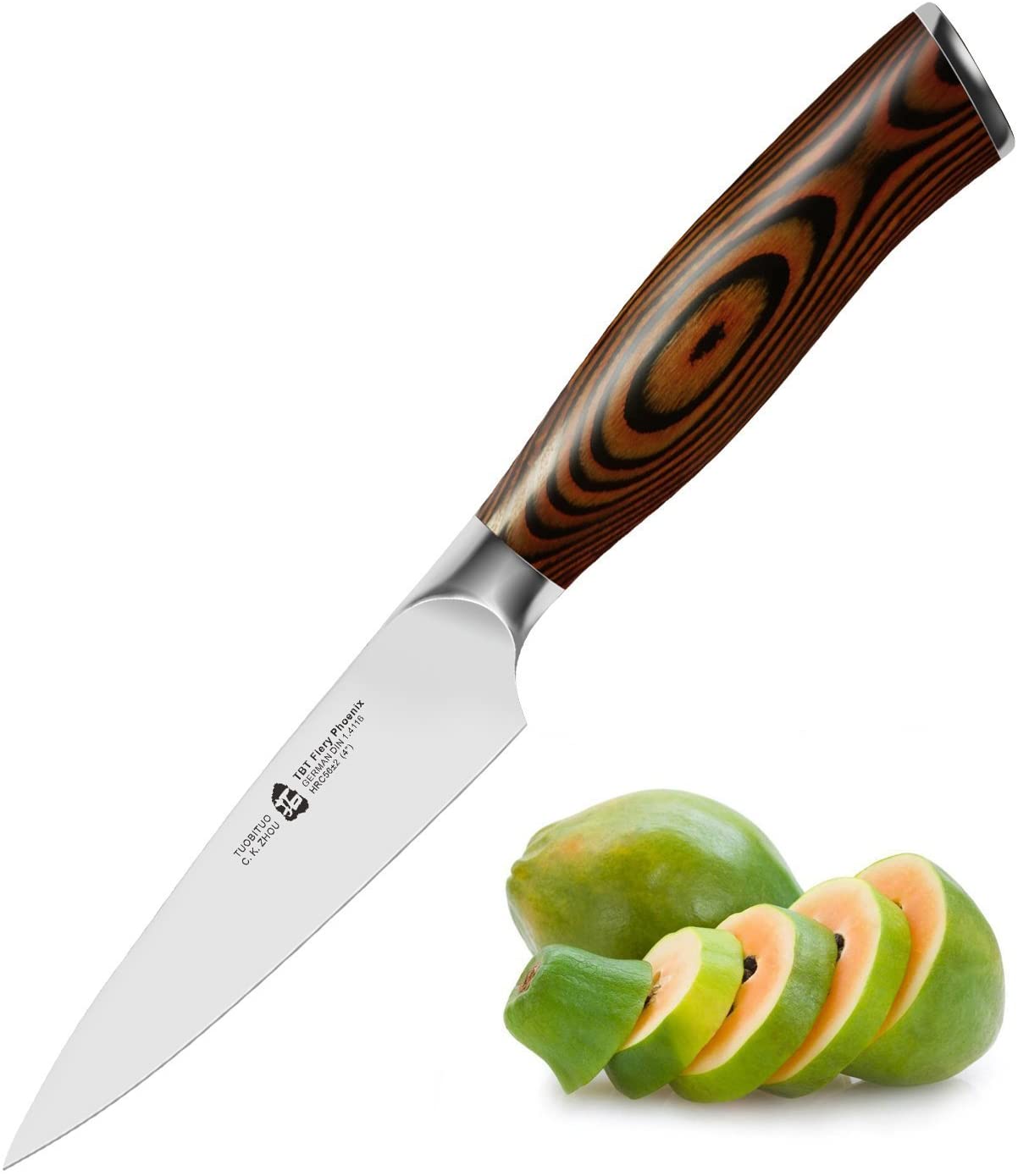Every house needs several knives. But what’s the point of having more than enough knives if you are not able to use them because they’re all dull? Your knives must be kept sharp, so they can perform better and keep them safer. Knives also last longer if their edges are properly maintained. You must know how to sharpen your knives and to have the right equipment for it.
Types of Blade Sharpeners
Blade sharpeners come in all shapes and sizes. They also have different approaches to sharpening the blade and maintaining the edge, too. Here are the pros and cons of each type of blade sharpener:
Ceramic and diamond sharpening rods
Sharpening rods are made of two reds set in a base at a specific angle. It’s a great tool to use to maintain the edge of the knives you use. Sharpening rods are quick and easy to use, and it’s also easy to learn. The rods can be round, triangular, or square – it doesn’t matter as long as the knife has a smooth surface to glide along. Most sharpening rods are made of alumina ceramic.
Pros:
- Easy to use
- Useful for quick maintenance and for keeping blades sharp
- Very simple
- Inexpensive
- Doesn’t take off too much material
Cons:
- The angles on the base are set – you can’t customize it
- It’s only best to use for maintenance, not for making your blades sharp
Bench stones and sharpening stones
When it comes to bench stones or sharpening stones, it usually refers to a flat and blocks dense of material used in the sharpening and shaping of metal tools, such as knives. One typical example of these stones are whetstones, which are perhaps the most common sharpening stone. These kinds of stones can be made out of natural stone, man-made stone, alumina ceramic, diamonds embedded on a block, and many other materials. When you sharpen with a bench stone, you have to place it on a flat surface. Stroke the knife against it at a proper angle to cut the edge. Usually, the front and back of a sharpening stone have different grit abrasives. The coarser one is for removing a significant amount of steel to cut a new edge, while the finer one is for polishing edges to a finished sharpness.
Pros:
- An efficient way to sharpen
- Fast way to sharpen tool
- Flexible at many angles
Cons:
- Difficult to master because there’s no angle guide
- Needs a steady hand
- Some stones can be expensive
Guided sharpening systems
Quite similar to bench stones, guided sharpening systems enjoy the benefits of bench stones while making it easier for the user by guiding the knife at the appropriate angle along with the stone. If you’re not quite ready for a full freehand stone sharpening but want to do more than sharp and edge realignment, picking sharpening systems are the perfect way to go. These systems use a precision-engineered, multi-angle knife clamp that can flip over to provide angles to both sides of any knife blade.
Pros:
- Offers efficient sharpening
- Works fast
- Easy to learn
- Flexible with many angle options
- Small in size
- Most sharpening systems come with various grits
Cons:
- Not as flexible as freehand
- Can’t sharpen larger knives and tools such as axes, chisels, etc.
Pull-through sharpener
Also known as a V-sharpener, a pull-through sharpener takes two pieces of hardened material and places it in a V-shape at a set angle. It’s easy to use – you only need to pull the knife through the V and be sure to go at a steady pace and put even pressure on the blades while you move. Don’t put too much pressure, or it will skip and create a jagged edge. Usually, the two metal looking pieces in the V is made of tungsten carbide.
Pros:
- Small and easy to carry around
- Easy to use
- Smooths out small nicks easily
- Inexpensive
Cons:
- Eats away material too quickly – there won’t be much of the blades left if used often
- Can exacerbate nicks
- Only gets blade moderately sharp
- Very rough
- Cannot sharpen the entire edge
Honing steel
The honing steel, also known as the butcher’s steel or kitchen steel, is a long rod of steel that’s attached to a handle. It doesn’t technically sharpen the knife nor remove any steel particles. However, it does realign the edge of your knife into a straight line, which makes the blade sharper. This is especially perfect on a butcher’s blade, which is usually made of softer steel. To use, quickly move the blade back and forth over the rod in quick successions. It’s just safer and accurate to place the hone straight up and down with the tip on the table and holding the handle on top. The coating on the honing steel
Pros:
- Common and easy to find
- Easier to use than bench stones
- Can improve cutting ability
- Looks great in the kitchen block
- Inexpensive
Cons:
- Doesn’t actually remove any steel
- Can’t remove nicks
Power sharpener
Power sharpeners are powered by electricity, so you don’t have to exert effort. It’s easy to use, and the sharpener works its magic to accommodate all types of kitchen and tactical knives. It can restore, repair, and sharpen your blades. Power sharpeners come with a precision grinder that automatically grinds at a perfect sharpening angle. The blade is automatically guided; you just need to hold the knife at the ideal angle every time you use it.
Pros:
- No set up required
- Easy to use
- Works on all kinds of knives
- Simple to maintain
Cons:
- Requires power, making it unsuitable for field use
- Fewer honing and grit surfaces
